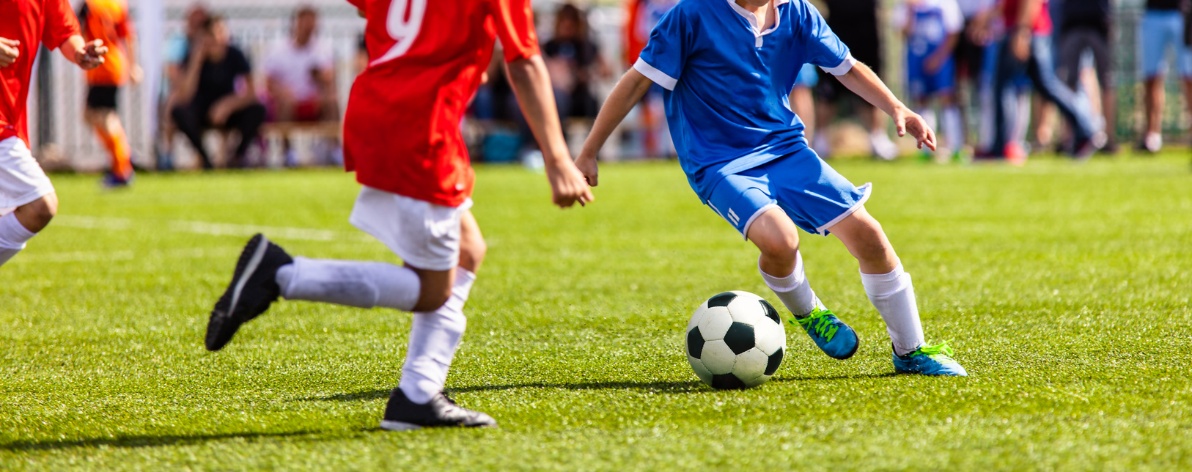Every cartwheel, goal, or wild bike ride is part of growing up—and so are the occasional bumps along the way. That is why protecting your child’s teeth during sports and play is so important. At Christensen Pediatric Dental, we guide families in choosing the right mouthguard options for kids, helping protect those precious growing smiles while they stay active and have fun.
Types of Sports Mouthguards
Mouthguards come in a three distinctive styles, and choosing the right one depends on your child’s age, activity, and stage of dental development. For most young kids, over-the-counter options are the most practical, since their teeth and jaws are still growing and changing.
- Boil-and-Bite Mouthguards (Recommended for Most Kids)
You soften these mouthguards in hot water, then mold them to your child’s bite at home. They offer a decent fit, are widely available at sporting goods stores, and are affordable enough to replace as your child grows. They are a great option for active kids who are still developing.
- Stock Mouthguards
These come pre-formed and are one-size-fits-all. While inexpensive, they often feel bulky, slip out easily, and can make it hard for kids to talk or breathe. Because of their poor fit and comfort, children may not wear them consistently—which limits their protective value. - Custom Sports Mouthguards
Custom mouthguards offer a high level of protection, but we typically reserve these for older children or teens whose mouths have stopped changing. For younger kids, frequent replacements make custom options less practical.
How to Safely Mold a Boil-and-Bite Mouthguard for Your Child
Boil-and-bite mouthguards are a practical choice for active kids. They’re affordable, easy to fit at home, and can be remolded as your child grows. Follow these steps to ensure a comfortable and protective fit:
- Prepare the Materials: Gather the mouthguard, a pot of water, a slotted spoon or tongs, a bowl of cold water, and a towel.
- Heat the Water: Bring the water to a rolling boil, then remove it from the heat source.
- Soften the Mouthguard: Submerge the mouthguard in the hot water for the time specified in the manufacturer’s instructions (usually around 30 seconds). Ensure it does not exceed the recommended time to avoid over-softening.
- Cool Briefly: Remove the mouthguard using the slotted spoon or tongs and let it cool for about 20 seconds. It should be warm but not hot to touch.
- Fit the Mouthguard: Have your child place the mouthguard into their mouth, aligning it with the upper teeth. They should bite down firmly and use their fingers to press the mouthguard against the teeth and gums for a snug fit. Encourage them to suck in to create a vacuum effect, enhancing the fit.
- Set the Shape: After molding, remove the mouthguard and place it in the bowl of cold water for about 30 seconds to set the shape.
- Test the Fit: Once cooled, have your child try on the mouthguard to ensure it fits comfortably and stays in place without needing to bite down constantly. If it does not fit properly, you can repeat the process. Most boil-and-bite mouthguards can be remolded several times.
Mouthguards act like helmets for your child’s teeth—absorbing shocks and protecting against broken, chipped, or knocked-out teeth. Whether your child is doing flips in cheer, catching pop flies in baseball, or flying down a mountain biking trail, a properly fitted mouthguard can significantly reduce the risk of dental trauma.
Why Your Child Needs a Sports Mouthguard for These Popular Activities
 You might think only football players need a mouthguard, but many sports carry the risk of oral injury. Mouthguards act like helmets for your child’s teeth—absorbing shocks and protecting against broken, chipped, or knocked-out teeth. Whether your child is doing flips in cheer, catching pop flies in baseball, or flying down a mountain biking trail, a properly fitted mouthguard can significantly reduce the risk of dental trauma. Here are a few common sports where mouthguards for kids are highly recommended:
You might think only football players need a mouthguard, but many sports carry the risk of oral injury. Mouthguards act like helmets for your child’s teeth—absorbing shocks and protecting against broken, chipped, or knocked-out teeth. Whether your child is doing flips in cheer, catching pop flies in baseball, or flying down a mountain biking trail, a properly fitted mouthguard can significantly reduce the risk of dental trauma. Here are a few common sports where mouthguards for kids are highly recommended:
- Soccer: Accidental elbows and collisions are part of the game.
- Basketball: A fast rebound or flying ball can cause chipped or broken teeth.
- Hockey: Mouth protection is a must, even in youth leagues.
- Baseball and Softball: Wild pitches and diving plays make mouthguards essential.
- Skateboarding and Scootering: Falls are frequent, and face-first impacts happen.
- Mountain Biking and BMX: Ogden’s outdoor trails are thrilling but can be unpredictable.
- Martial Arts and Wrestling: Direct contact with opponents increases the risk of dental trauma.
- Gymnastics and Cheer: High-flying flips and landings mean accidental bumps are common.
If your child participates in any of these activities, a sports mouthguard can help prevent dental emergencies before they happen.
Teaching Kids to Protect Their Teeth
Giving your child the tools to care for their smile while they are having fun in sports is just as important as brushing and flossing. Here are smart habits to promote mouth safety:
- Encourage Mouthguard Use at Every Practice and Game: Not just during tournaments.
- Store the Mouthguard Properly: In a ventilated case to keep it clean and dry.
- Rinse After Use: A quick rinse helps keep bacteria away.
- Clean Regularly: Use mild soap and a toothbrush weekly.
- Check for Wear: If it becomes thin or misshaped, bring it in for a replacement.
These small habits go a long way toward keeping your child’s smile safe, strong, and injury-free.
Start with Prevention—Support Your Child’s Smile for Life
From sports injuries to cavities, prevention is the key to keeping your child’s smile healthy and bright. At Christensen Pediatric Dental in Ogden, UT, we offer caring, comprehensive dental services to help your child stay on track. Call us today to schedule a visit and take the next step in protecting their growing smile.
Call our office today. We are proud to protect the smiles of Ogden’s most active kids.
3550 Harrison Blvd., Suite 1
Ogden, UT 84403



